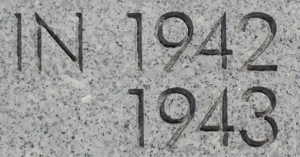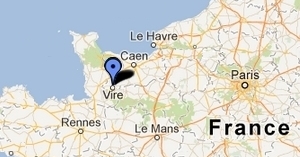“In history as in cinema, every close-up involves something off-camera.” This reflection by the historian Carlo Ginzburg in an interview with Le Monde in 2022 summarizes the object and spirit of the Vir(e)tuelle Memory project.
Started in 2010 in Vire in Calvados, it aims first to study the persecutions against the Jews of the city, then those of other territories, on a local and regional scale. By thus reducing the focus on targeted spaces, it is not « only » a question of attempting to reconstruct the individual and family trajectories of the victims, but of truly rethinking the history of the Shoah as an open, even indeterminate, system.
How can we understand that Adolfo Kaminsky, barely leaving Drancy, fell into the Resistance by pure chance in February 1944? How can we interpret the foresight (or reckless risk-taking?) of Slavsko Krausz when he left Cherbourg and refused to declare himself « Israelite » in September-October 1940? Why was David Furmanski, who escaped from the Beaune-la-Rolande internment camp in July 1941, denounced for black trading and arrested in Vire a year later? Why and how did the prefect of La Manche manage at the last minute to free Osnas Nadelman from Saint-Lô prison during the main roundup of October 22-23, 1943? How were Rosette and Sylviane Augier able to escape arrest as children when the whole family was taken away in July 1942, then in October 1943, and when two eyewitnesses claimed to have seen them taken by the Germans to Neuville? How did Abraham Drucker, arrested in Saint-Sever in the spring of 1941 for his Gaullist and « Anglophile » positions, find himself forced to act as a doctor at the Excelcior hotel in Nice at the end of 1943?… The list of questions is long. For each of them, the answer is uncertain and shows numerous contingencies in the strategies and choices made by women and men immersed in a context of oppression during the Nazi Occupation.
The off-camera also refers to the interlocking of geographical scales: near or far, the events suffered by the Jews of Vire, Saint-Lô, Calvados or La Manche are directly linked to decisions taken in Berlin, Paris, Vichy or Birkenau. Without her immediately knowing it, the fate of the Kaminsky family hangs by a thread, for example: that of the degraded diplomatic relations between Nazi Germany and Argentina at the end of 1943. A few months earlier, Henri Boni was deported from France by convoy no. operational phase with the completion of Krematorium II…
Finally, since the instigator of the microstoria speaks of « close-up » and « off-camera », it is the opportunity to reaffirm the privileged axis for almost 15 years in the Vir(e)tual Memory project, to have the photographic and filmic image as a medium of transmission and creation. All the images in all the exhibitions and short films were produced with young neophytes who also knew how to invest in this learning: may they be thanked again and again !





